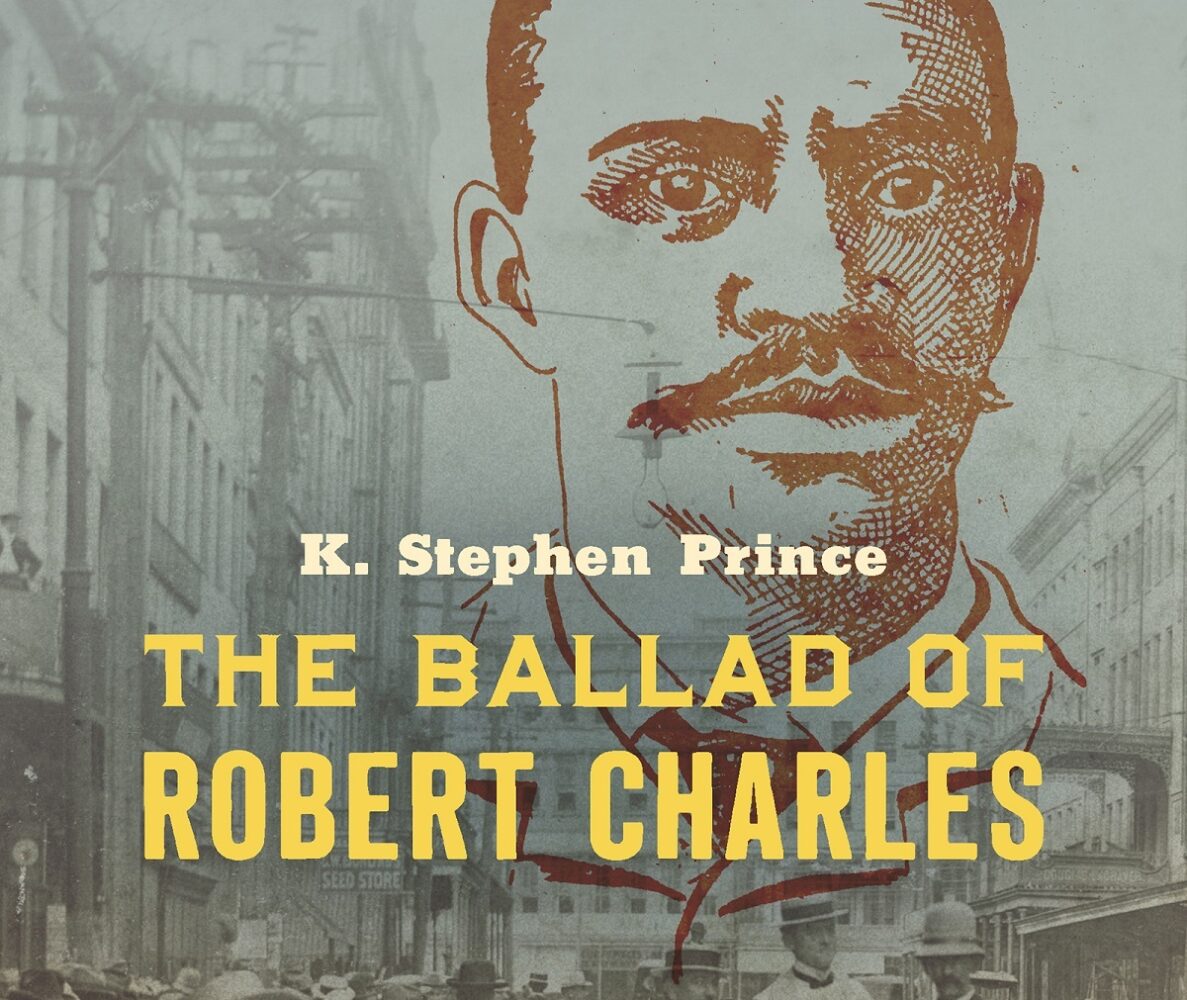Lessons Even in Silence
K. Stephen Prince’s The Ballad of Robert Charles: Searching for the New Orleans Riot of 1900
Published: November 30, 2021
Last Updated: February 28, 2022

University of North Carolina Press
In The Ballad of Robert Charles (University of North Carolina Press, 2021) historian K. Stephen Prince analyzes these events, their aftermath, and their place in New Orleans’s public memory from multiple points of view. Drawing on a variety of sources, including local and national newspapers, police and government records, census data, maps, and memoirs by early jazz musicians, this book offers a compelling view of New Orleans at the “dawn of Jim Crow.” In 1900 the white supremacist project of racial segregation remained partial and incomplete, contested by Black New Orleanians in both subtle and direct ways. It is within this context, Prince argues, that the violent actions of both Robert Charles and the white rioters must be understood.
Yet, Prince reveals, initially understanding the man at the center of the story proved difficult. “Though Charles was literate and politically engaged,” Prince writes, “his historical silence is almost total.” Charles’s killing precluded his offering any explanation for his actions. If personal papers existed in his rented room, they disappeared in the chaotic wake of reporters and souvenir seekers. Black acquaintances of Charles, questioned by the media and the police, denied knowing him as a matter of self-protection. Historical archives that rarely preserve the voices of working-class Black Americans like Charles only served to silence him further.
Our limited knowledge of Robert Charles makes Prince’s scholarship all the more impressive. He provides several frameworks to recover aspects of Charles’s worldview. Born in rural Mississippi at the end of the Civil War, Charles experienced the advance of political and civil rights for Black people during Reconstruction and the withdrawal of those rights as federal support receded and white Democrats consolidated power across the South. Prince also considers Charles’s use of firearms within a tradition of Black armed self-defense, his wariness of the police in light of New Orleans’s convict labor system, and his hope for the future as a supporter of Black American emigration to Africa. Prince concludes that, given these contexts, Charles’s decisions must be viewed as “a bold act of political resistance and a revolt against a deeply entrenched system of racialized violence.”
If Charles’s motivations need to be teased out from layers of silence, retaliation for deaths of police officers might seem an obvious driver of the white mob’s violence. Delving deeper, Prince locates the impetus behind the assaults on Black New Orleanians during the riot in white residents’ frustration with the reality of a still-integrated city. In other words, Prince argues that the homicides committed by Charles served as a catalyst, or an excuse behind which white New Orleanians violently asserted their control of public space. All but one of the attacks took place in integrated spaces, including streetcars, markets, and parks. Often white participants lived near the site of the assault. In at least one instance, the Black victim lived a few houses down from one of her white killers. “The rioters,” Prince writes, “were foot soldiers of white supremacy: policing the color line, reclaiming public spaces, and creating a lily-white New Orleans.”
…Charles experienced the advance of political and civil rights for Black people during Reconstruction and the withdrawal of those rights as federal support receded and white Democrats consolidated power across the South.
Robert Charles’s body lies buried in an unmarked grave in Holt Cemetery, a fitting metaphor for white New Orleanians’ purposeful forgetting of the events of July 1900, wherein Charles’s story constituted a dangerous reminder of Black resistance and an uncomfortable recognition of the violence required to uphold white supremacy. By the middle of the twentieth century, white New Orleans had erased Charles and the riot from its collective memory.
Black New Orleans, however, maintained Charles’s memory in a number of ways. Prince mined oral histories with New Orleans jazz musicians to outline the contours of the story that Black people continued to tell about Robert Charles. In their recounting, Charles was a hero, his exercise of armed self-defense a point of pride. More than one musician restructured the ending of Charles’s story so that he miraculously survived the shootout and “got away ever since.” Black New Orleanians’ accounts of Charles and the 1900 riot countered white people’s erasure of the story from the city’s historical narrative and served as an act of resistance.
The Ballad of Robert Charles tackles a challenging, yet timely, topic. Through a creative use of sources, multiple perspectives, and careful conjecture, Prince tells a story more than a century old that resonates in contemporary discussions about policing, racial violence, and white supremacy. This engaging book reminds us that even in the silences there are lessons to be learned from the past, if we know how to listen.
Elizabeth C. Neidenbach is a public historian in New Orleans. She earned her PhD in American Studies from the College of William and Mary and currently works as the visitor services trainer at The Historic New Orleans Collection.
